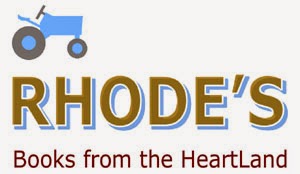In the
farming region where I grew up, a general financial downturn ran throughout the
1920s and continued as the Great Depression beginning in 1930. The severe economic conditions rapidly
worsened, slowly diminished in the last years of the 1930s, and ended more or
less in the early 1940s. Extreme heat in 1934 and again in 1936 threatened to
make farming a losing proposition. My father said that, in 1934, there were only a few
glimmers of hope that the economic slump might end but that, by the late
1930s, the country’s overall financial situation had become noticeably less
dire. During the era, even farm families that could grow much of their food
were mindful of the cost. Recipes for inexpensive meals were widely
shared.
 |
|
My Father with Horses Named Togo and
Maud in April of 1930
The Middle of a Long Economic
Depression in Rural Indiana
|
One such
recipe, called “dinner in a dish,” was the contribution of Elsie Dowden, who
lived in my hometown but who grew up in Bedford. If you like recipes that
combine hamburger with other ingredients, you will enjoy Elsie’s dinner in a
dish!
I have used
Panko instead of bread crumbs with good results, but, if you prefer a larger
crumb, dry several slices of bread on trays in a warm kitchen for a day until the bread
crumbles into large morsels.
My mother
referred to the recipe’s green peppers as “mangoes.” In the 1700s, fruit, such
as the mango, and vegetables, such as the green pepper, were pickled to
preserve them. People began to call any pickled fruit or vegetable a “mango.”
The generic term stuck for the green pepper and was in widespread use as late
as my mother’s generation.
 |
|
Rev.
Lowell Morris and Mrs. Morris on July 29, 1937
At the Parsonage
in Westville, Indiana
Before They
Moved to My Hometown
Near the
End of the Great Depression
|
If you want
to reduce the salt in your diet, you can put only 1 tsp of salt in the mixture
without a significant loss of saltiness; in fact, I tend to find the recipe’s
salt level a bit too much. I have wondered if people who lived through the
Great Depression were so accustomed to preserving meat in salt that they felt
they needed lots of salt in a hamburger dish.
The
directions warn against accidental scrambling of the eggs when adding them to
ingredients that have just come from a hot skillet. You don’t have to worry
excessively about scrambling the eggs; even if your mixture is too hot, the
eggs won’t entirely scramble, and you won’t notice the scrambling.
Incidentally,
to “dot with butter” means to shave some cold butter here and there on top of
the bread crumbs to flavor them and brown them.
Ingredients
4 Tbsp
butter
1 medium
onion chopped
2 green
peppers sliced
1 pound
hamburger
1 ½ tsp
salt
¼ tsp
pepper
2 eggs
2 cups
fresh cut corn
4 medium
tomatoes sliced
½ cup dry
bread crumbs
Directions
Put butter
in skillet and lightly fry peppers and onion for 3 minutes. Add meat and blend
thoroughly. Add salt and pepper. Remove from fire, let cool just enough that
eggs will not scramble when added, stir in eggs, and mix well. Put 1 cup corn
in baking dish, then half of meat mixture, then a layer of sliced tomatoes,
then another layer of corn, meat, and tomatoes, cover with crumbs, dot with
butter, and bake 35 minutes.

